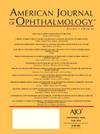美国遗传性视网膜疾病发病率和患病率的趋势和差异。
IF 4.1
1区 医学
Q1 OPHTHALMOLOGY
引用次数: 0
摘要
目的遗传性视网膜疾病(IRDs)基因检测技术的进步提高了诊断的准确性,许多临床试验为新的治疗方案提供了希望。尽管如此,关于IRDs在美国的流行程度和人口结构分类的数据有限。本研究旨在描述ird在美国的发病率和流行程度,确定随时间推移的趋势,并检查年龄、性别、种族和民族的差异。DESIGNTrend研究(2016-2023)参与者:患有ICD-10诊断代码为色素视网膜营养不良(H35.52)、脉络膜血症(H31.21)、色盲(H53.51)、先天性夜盲症(H53.63)和遗传性视网膜营养不良(H35.5)的患者。方法:本研究利用了来自一个汇总的、未识别的电子健康记录平台的数据,其中包括超过1.17亿美国患者。通过将所有具有ICD-10 IRD代码的患者除以研究年度的患者总数来确定患病率。发病率的确定方法是,仅将某一年内出现ICD-10编码新病例的患者除以该年的患者总数。计算并报告了发病率、患病率、患病率优势比(POR)、比例比(PR)和95%置信区间。结果2023年,美国IRDs的总体患病率为每10万人106例,比2016年增加1.84倍(CI, 1.81-1.87)。年发病率也显著增加,从2016年到2023年,从12.5 / 10万增加到15.5 / 10万(PR 1.24, CI 1.19-1.28)。与女性相比,男性患脉膜血症(POR 5.17, CI 4.07-6.59)、色盲(POR 1.65, CI 1.43-1.91)和先天性静止性夜盲症(POR 2.58, CI 2.11- 3.15)的风险明显更高。与黑人和西班牙裔人群相比,几乎在所有情况下,白人患者都被不成比例地诊断为ird。年龄分布因病情而异,但所有IRDs的患病率均随年龄的增长而增加。结论:我们的研究结果表明,随着诊断和治疗的进步,美国对IRDs的发病率和患病率的了解有所增加。我们还揭示了以前未报道的种族差异,突出了我们对不同人群遗传疾病理解的潜在差距。本文章由计算机程序翻译,如有差异,请以英文原文为准。
Trends and Disparities in the Incidence and Prevalence of Inherited Retinal Diseases in the United States.
PURPOSE
Advances in genetic testing for inherited retinal diseases (IRDs) have enhanced diagnostic accuracy and many clinical trials offer hope for emerging treatment options. Despite this, there is limited data on the prevalence and demographic breakdown of IRDs in the United States (US). This study aims to characterize the incidence and prevalence of IRDs in the US, identify trends over time, and examine disparities by age, sex, race, and ethnicity.
DESIGN
Trend study (2016-2023) PARTICIPANTS: Patients with ICD-10 diagnosis codes for pigmentary retinal dystrophy (H35.52), choroideremia (H31.21), achromatopsia (H53.51), congenital night blindness (H53.63), and hereditary retinal dystrophy (H35.5).
METHODS
This study utilized data from an aggregated, deidentified electronic health record platform with over 117 million US patients. Prevalence was determined by dividing all patients with the ICD-10 IRD code by the total number of patients for the study year. Incidence was determined by dividing only patients with a new instance of the ICD-10 code of interest within a certain year by the total number of patients for the same year.
MAIN OUTCOMES MEASURES
Incidence, prevalence, prevalence odds ratios (POR), proportion ratios (PR), and 95% confidence intervals were calculated and reported.
RESULTS
In 2023, the overall prevalence of IRDs in the US was 106 per 100,000 persons, a 1.84-fold (CI, 1.81-1.87) increase from 2016. Annual incidence also increased significantly, from 12.5 to 15.5 per 100,000 from 2016 to 2023 (PR 1.24, CI 1.19-1.28). Males exhibited a significantly higher risk of choroideremia (POR 5.17, CI 4.07-6.59), achromatopsia (POR 1.65, 1.43-1.91), and congenital stationary night blindness (POR 2.58, CI 2.11- 3.15) compared to females. White patients were disproportionately diagnosed with IRDs compared to Black and Hispanic populations for nearly all conditions. Age distribution varied by condition, but the prevalence of all IRDs combined increased with increasing age.
CONCLUSIONS
Our findings suggest an increased ascertainment of the incidence and prevalence of IRDs in the US in the setting of diagnostic and treatment advances. We also reveal previously unreported disparities in the prevalence of these conditions by race, highlighting a potential gap in our understanding of genetic disease in diverse populations.
求助全文
通过发布文献求助,成功后即可免费获取论文全文。
去求助
来源期刊
CiteScore
9.20
自引率
7.10%
发文量
406
审稿时长
36 days
期刊介绍:
The American Journal of Ophthalmology is a peer-reviewed, scientific publication that welcomes the submission of original, previously unpublished manuscripts directed to ophthalmologists and visual science specialists describing clinical investigations, clinical observations, and clinically relevant laboratory investigations. Published monthly since 1884, the full text of the American Journal of Ophthalmology and supplementary material are also presented online at www.AJO.com and on ScienceDirect.
The American Journal of Ophthalmology publishes Full-Length Articles, Perspectives, Editorials, Correspondences, Books Reports and Announcements. Brief Reports and Case Reports are no longer published. We recommend submitting Brief Reports and Case Reports to our companion publication, the American Journal of Ophthalmology Case Reports.
Manuscripts are accepted with the understanding that they have not been and will not be published elsewhere substantially in any format, and that there are no ethical problems with the content or data collection. Authors may be requested to produce the data upon which the manuscript is based and to answer expeditiously any questions about the manuscript or its authors.

 求助内容:
求助内容: 应助结果提醒方式:
应助结果提醒方式:


